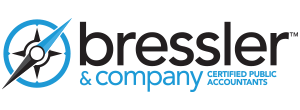Maximizing Your Employee Business Expense Deductions
Individuals can deduct certain expenses as miscellaneous itemized deductions that they incur in the course of their employment. Generally, qualified business expenses are un-reimbursed expenses that are both ordinary (common and accepted in your industry) and necessary and do not include personal expenses.
There are two major barriers to deducting employee business expenses. The most commonly encountered is the 2%-of-income (AGI) deduction floor that applies to most (Tier II) miscellaneous deductions, which besides employee business expenses also includes investment expenses, certain legal expenses, home office and other expenses. The amount deductible as miscellaneous expenses is the total of those expenses reduced by 2% of the taxpayer’s adjusted gross income for the year. Depending upon the taxpayer’s income, this reduction can substantially lessen or eliminate the deductible amount. The second major barrier is the alternative minimum tax (AMT), in which the Tier II miscellaneous expenses are not deductible at all. Thus, to the extent that the taxpayer is affected by the AMT, there is no benefit derived from these deductions. There are, however, some planning strategies that can be applied to overcome these barriers, such as the following:
- Employer Accountable Plan – This is a plan under which your employer reimburses you for your employment-related expenses, but requires you to “adequately account” for the expenses. Expenses reimbursed by the employer under an “accountable plan” are excluded from income, thus essentially allowing 100% of the expenses to be deducted, while avoiding the 2%-of-income and AMT limitations. If the employer does not wish to add a reimbursement plan on top of the employee’s existing income, a salary reduction replaced with an accountable plan might be negotiated.
- Bunch Deductions – With proper planning, employee business expenses for more than one year can be deferred or accelerated into one year, thus producing a larger deduction in that one year to overcome the 2% floor for miscellaneous deductions.
- Education Expenses – Although certain employment-related education expenses can be taken as an employee business expense, there are other ways to gain a tax benefit and avoid the 2%-of-AGI and AMT limitations. These include income-limited education tax credits, and if your employer has an educational assistance plan, your employer can reimburse you up to $5,250 for most education expenses other than those associated with education travel.
- Utilize the Section 179 Deduction – Generally, business assets with a useful life of more than one year must be deducted (depreciated) over several years. However, most business assets, other than real estate, qualify for the Code Section 179 expense deduction that allows the entire cost (up to $25,000 for 2014) to be deducted in one year. While vehicles used for business are eligible for Section 179 expensing, other limitations cap the deduction at lower amounts. The depreciation or Section 179 deduction of an employee’s business assets is part of employee business expenses subject to the 2%-of-AGI floor. However, by claiming the Section 179 deduction in the year the asset is purchased rather than deducting a lower depreciation amount over several years, there is a greater chance that the total miscellaneous deductions will be more than the 2%-of-AGI floor, thus allowing part of the expense to be deducted.
If you would like to explore any of these techniques, please give Bressler & Company a call at 559.924.1225.





